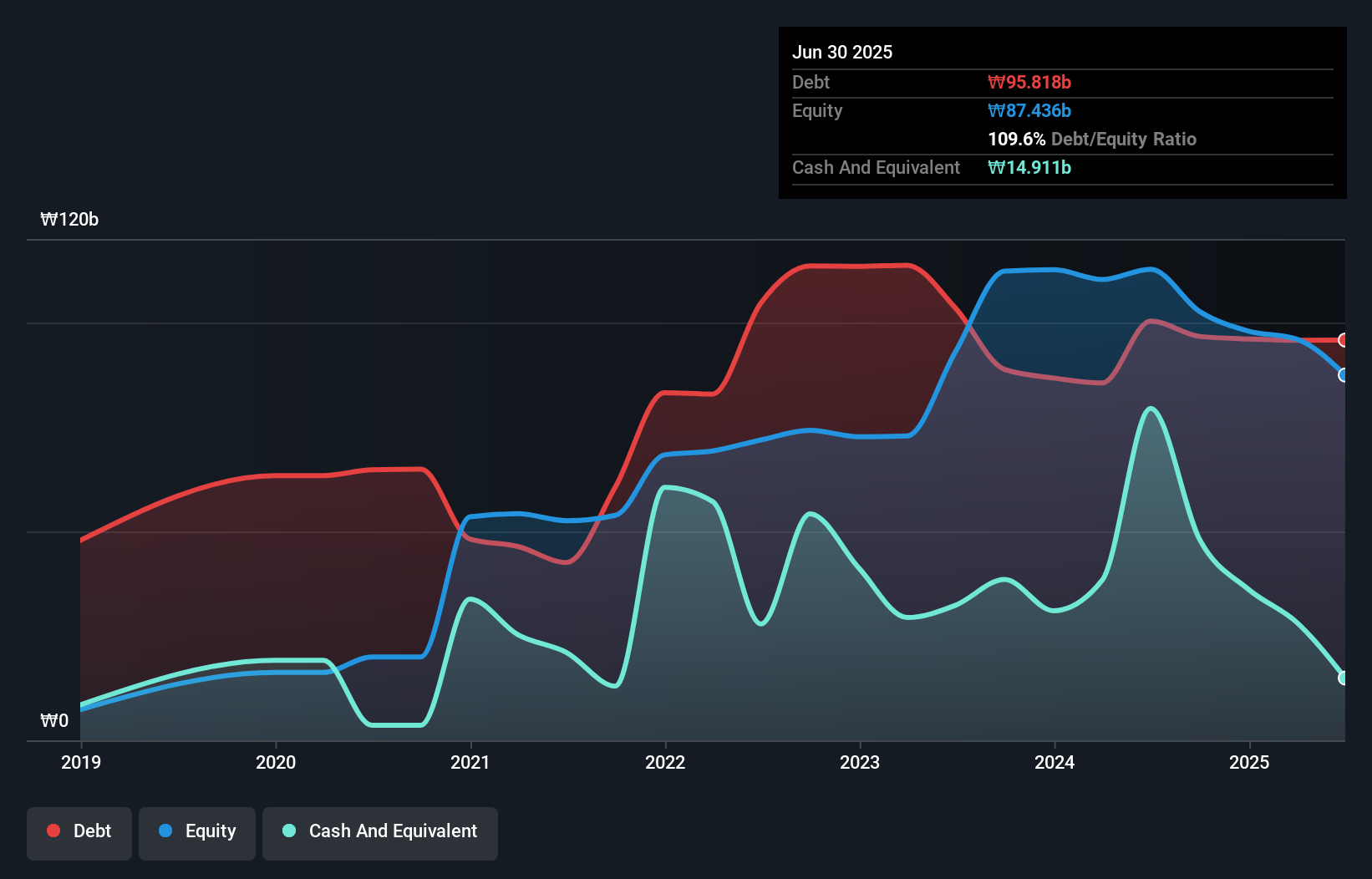- South Korea
- /
- Machinery
- /
- KOSDAQ:A299030
Does Hana Technology (KOSDAQ:299030) Have A Healthy Balance Sheet?
David Iben put it well when he said, 'Volatility is not a risk we care about. What we care about is avoiding the permanent loss of capital.' When we think about how risky a company is, we always like to look at its use of debt, since debt overload can lead to ruin. We can see that Hana Technology Co., Ltd. (KOSDAQ:299030) does use debt in its business. But should shareholders be worried about its use of debt?
What Risk Does Debt Bring?
Generally speaking, debt only becomes a real problem when a company can't easily pay it off, either by raising capital or with its own cash flow. In the worst case scenario, a company can go bankrupt if it cannot pay its creditors. However, a more usual (but still expensive) situation is where a company must dilute shareholders at a cheap share price simply to get debt under control. By replacing dilution, though, debt can be an extremely good tool for businesses that need capital to invest in growth at high rates of return. When we think about a company's use of debt, we first look at cash and debt together.
What Is Hana Technology's Debt?
As you can see below, Hana Technology had ₩95.8b of debt at June 2025, down from ₩100.4b a year prior. On the flip side, it has ₩14.9b in cash leading to net debt of about ₩80.9b.

How Strong Is Hana Technology's Balance Sheet?
We can see from the most recent balance sheet that Hana Technology had liabilities of ₩112.9b falling due within a year, and liabilities of ₩24.4b due beyond that. Offsetting these obligations, it had cash of ₩14.9b as well as receivables valued at ₩21.2b due within 12 months. So it has liabilities totalling ₩101.2b more than its cash and near-term receivables, combined.
This deficit isn't so bad because Hana Technology is worth ₩263.0b, and thus could probably raise enough capital to shore up its balance sheet, if the need arose. However, it is still worthwhile taking a close look at its ability to pay off debt. When analysing debt levels, the balance sheet is the obvious place to start. But ultimately the future profitability of the business will decide if Hana Technology can strengthen its balance sheet over time. So if you want to see what the professionals think, you might find this free report on analyst profit forecasts to be interesting.
View our latest analysis for Hana Technology
In the last year Hana Technology had a loss before interest and tax, and actually shrunk its revenue by 19%, to ₩80b. That's not what we would hope to see.
Caveat Emptor
Not only did Hana Technology's revenue slip over the last twelve months, but it also produced negative earnings before interest and tax (EBIT). Indeed, it lost ₩20b at the EBIT level. When we look at that and recall the liabilities on its balance sheet, relative to cash, it seems unwise to us for the company to have any debt. So we think its balance sheet is a little strained, though not beyond repair. However, it doesn't help that it burned through ₩49b of cash over the last year. So in short it's a really risky stock. The balance sheet is clearly the area to focus on when you are analysing debt. But ultimately, every company can contain risks that exist outside of the balance sheet. Case in point: We've spotted 2 warning signs for Hana Technology you should be aware of.
When all is said and done, sometimes its easier to focus on companies that don't even need debt. Readers can access a list of growth stocks with zero net debt 100% free, right now.
Valuation is complex, but we're here to simplify it.
Discover if Hana Technology might be undervalued or overvalued with our detailed analysis, featuring fair value estimates, potential risks, dividends, insider trades, and its financial condition.
Access Free AnalysisHave feedback on this article? Concerned about the content? Get in touch with us directly. Alternatively, email editorial-team (at) simplywallst.com.
This article by Simply Wall St is general in nature. We provide commentary based on historical data and analyst forecasts only using an unbiased methodology and our articles are not intended to be financial advice. It does not constitute a recommendation to buy or sell any stock, and does not take account of your objectives, or your financial situation. We aim to bring you long-term focused analysis driven by fundamental data. Note that our analysis may not factor in the latest price-sensitive company announcements or qualitative material. Simply Wall St has no position in any stocks mentioned.
About KOSDAQ:A299030
Hana Technology
Engages in the development of precision automation solutions in the industrial field in South Korea.
High growth potential with imperfect balance sheet.
Market Insights
Community Narratives



